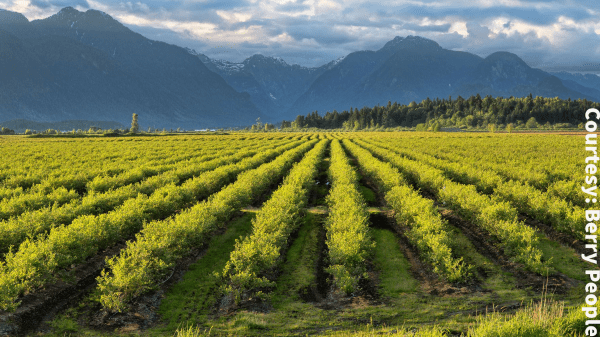
USDA’s Economic Research Service (ERS) has issued a new report entitled The Changing Landscape of U.S. Strawberry and Blueberry Markets: Production, Trade, and Challenges from 2000 to 2020.
As is usually the case with these reports, the exercise is to sort through the facts and figures and pull out those that are most significant.
It is especially interesting to look at the report in comparison with the Global State of the Blueberry Industry report issued earlier this year.
The most striking trend since the turn of the century has been the transformation of the blueberry industry from a seasonal one to an all-season one. This is primarily the result of the entrance of South America, particularly Peru, Chile, and Argentina, into the world blueberry market.
Remarkably, the tremendous boom in imports has not damaged the domestic industry, which increased 283 percent from 2000-02 to 2018-2020. The value of U.S. production was $713 million in 2020. Furthermore, U.S. exports also increased enormously over the same period, from approximately 5 million pounds in 2000 to 48 million pounds in 2020.
The figures in the ERS report suggest one crucial factor: seasonal supplies from different nations appear to dovetail remarkably well. U.S. fresh production centers around the summer, with July as the highest-producing month. Imports from Peru are concentrated almost entirely between August and December, and November as the peak month. Chile, formerly the leading exporter to the U.S., ships from November to March, its peak month being January.
But Peru is the astonishing success. According to the 2023 report, “Last year the country’s blueberry export volumes were up 23-fold since 2015. A few years prior to that Peru was regarded as an ‘impossible’ place to grow blueberries due to its slim number of cold hours and a profile that broke the mold from what were traditionally perceived as blueberry-growing conditions. It took visionaries to make this happen, including local growers and nurseries alongside Chilean, Spanish, and U.S. horticultural experts who also played a pioneering role.”
The 2023 report emphasizes the importance of “foreign entrepreneurs and investors who went with the tide rather than fighting against it, along with Peruvian agricultural companies that have since become industry leaders, some of whom have undertaken ventures north in the same expansive, pioneering fashion to produce blueberries in such countries as Colombia and Mexico.”
The lesson is striking: if Peru could move so fast from a country where it was “impossible” to produce blueberries to a leader in the world market, what other apparently insoluble problems in other countries and industries can similarly be overcome?



